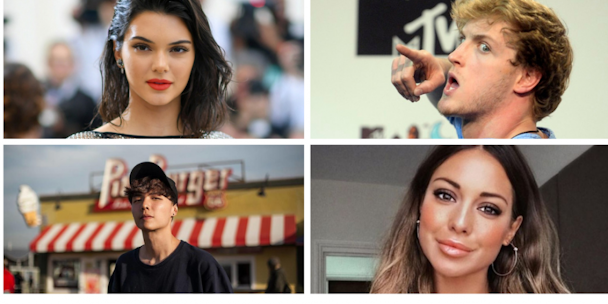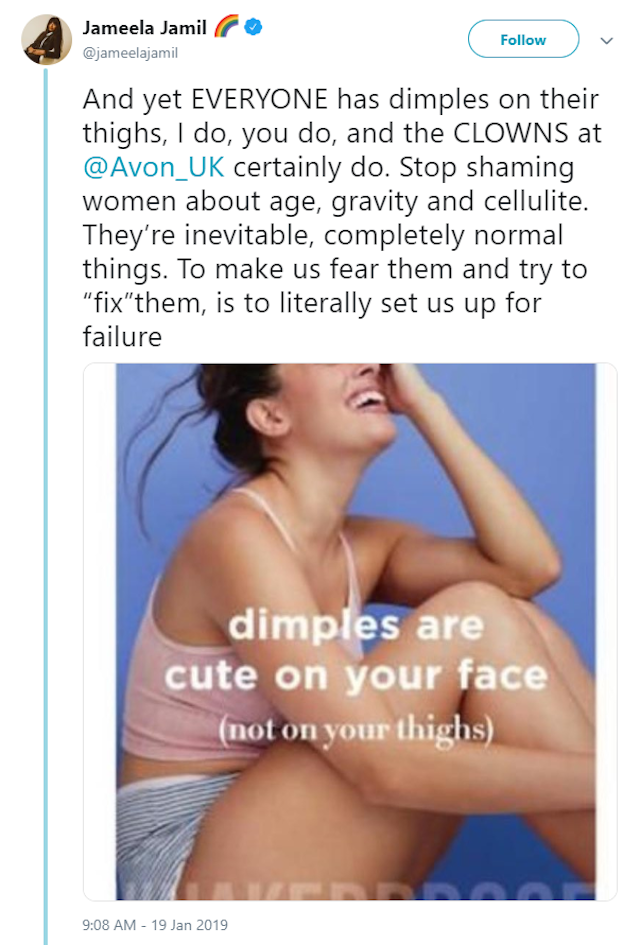Influencer marketing in 2019: what you need to know
Following several PR blunders in the last year alone, brands are questioning whether they should put such an emphasis on influencer marketing. Industry experts assure that there is still a place for influencers – if marketers can adapt how they use them in their campaigns.

Kendall Jenner, Logan Paul, Daryl Aiden Yow, Louise Thompson: influencers
Recent controversies surrounding influencers like photographer Daryl Aiden Yow and YouTube sensations PewDiePie and Logan Paul illustrate the issues brands can face when partnering with social media personalities.
Sony was humiliated after Yow was caught passing off stock images as his own photography, while PewDiePie’s antisemitic remarks and Paul’s visit to Japan's Suicide Forest saw brands like Disney, Google and YouTube hastily withdraw their sponsorship.
These scandals alerted marketers to the very real dangers of relinquishing control to young creators, and the consequences their behavior can have on a brand’s image. Nonetheless, influencer-led marketing is still viewed as a viable means of connecting with your target audience, when used appropriately.
Here The Drum identifies three factors marketers should think about when adopting influencer marketing.
Transparency
Earlier this year it was revealed that 71% of UK consumers wrongly believed that influencer marketing was not regulated at all. Furthermore, research conducted by Bazaarvoice 2018 reported that 47% of respondents feel fatigued by influencer content, while another study showed that 61% of consumers feel that brands are not being transparent about how to use influencers to promote their products online.
To combat the culture of distrust around influencer marketing, absolute clarity between brand-sponsored influencers and their followers is essential. For Instagram influencers, this is easily achieved by using the sponsored content pin developed by the platform, alongside appropriate hashtags. The introduction of these tighter guidelines around sponsored posts has proven successful: when influencers such as Louise Thompson of Made in Chelsea fame failed to comply with these rules, she was publicly penalized.

In addition to being transparent with the public, more conversations need to happen between influencers and brands to ensure both parties are deriving value from their partnerships. For example, some influencers are now sharing first-party data with brands in order to offer a level of assurance regarding the number of followers who have seen and engaged with a post. In addition to this, Buzzoole has launched what it claims is the industry’s first ever benchmarking report to tackle the common measurement issues which surround influencer-led marketing.
Authenticity
Influencer-led marketing campaigns promised to personalize the consumer’s experience of a brand, yet it is on this point that many are failing to deliver. Consumers will react negatively to what they feel is disingenuous content. This was illustrated by Listerine’s ill-advised collaboration with Instagram influencer Scarlett London, which incited criticism and ridicule from consumers.
Industry leaders are now calling for marketers to invest time in selecting the right influencers for the right campaigns, as opposed to buying up personalities based on their number of followers. This calls for marketers to keep their customers at the heart of the journey and to produce campaigns which depict their reality. There are calls for a greater show of diversity in marketing campaigns across a range of industries, with a recent study showing that 51% of people want to see companies working with a wider mix of people who look like them and reflect their personal values.
This is also seen in moves to make the industry more responsible: 62% of people feel influencer content “takes advantage of impressionable audiences”. Consumers feel that influencer posts are “too materialistic” and that they misrepresent real life. Recently body positive influencers such as Jameela Jamil have called out both ads and Instagram influencers for their disingenuous posts, pushing for more honesty across the media. By recognizing these movements and allowing them to inform their marketing, brands will garner better audience response.

Vetting
In order to protect their reputation, brands should carry out a thorough background check on all potential influencers. To determine their suitability, marketers must do their research and acquaint themselves with the individual’s career history as well as their career trajectory.
This is a tactic which has been adopted by major brands like L’Oreal. The cosmetics giant invests a massive 90% of its influencer marketing budget on Instagram and has started doing its own ‘background checks’ on the social stars it works with. This is part of a recently implemented three-step vetting process to guarantee the safety of the brand.
Influencers are no longer viewed as merely a marketing tactic and have in many instances become a key component of a campaign’s strategy; as such the contracts between both the influencer and the brand must reflect this change in dynamic.
Some contracts now include a social responsibility clause which mitigates against an influencer’s past and future transgressions. This protects the brand’s right to withdraw from any contractual agreement should the behavior of the influencer threaten to tarnish the reputation of the brand.
Additionally, contracts now often include a takedown clause which allows brands and influencers to remove content from social pages. This works in favor of the business, allowing it to remove an influencer's posts if they are inconsistent with its culture. In some instances this can also work in favor of the influencer, who may wish to take down sponsored content after an agreed time period in order to maintain their authenticity.
Marketers must not be driven by follower data alone: brands have been burned by choosing influencers that have bought their audience, which results in them pitching to an essentially non-existent audience and receiving no ROI. This serves as a warning against marketers not thoroughly researching their selected influencers.
As Clare Gore, head of affiliates at the Vouchercloud, told The Drum columnist Sam Scott: “Influencer marketing has just come out of the ‘Wild West’ phase. People realized that just because there are a few zeros in a follower count, it doesn’t equal guaranteed return on investment. Engagement and likes can be inflated – web sessions are much harder to spoof.”
Ultimately, as Gore says, scale isn't everything when it comes to influencer marketing: "An audience of 2,000 where 50% are directly interested is far better than an audience of 2 million where 0.005% are interested. It’s targeted, it’s cost effective and it’s efficient.”
By putting in place transparency, authenticity and vetting processes before starting campaigns, brands can ensure their influencer spend delivers results. As Sedge Beswick (previously of Red Bull, Three UK and ASOS) wrote in January, influencer marketing will not be going anywhere anytime soon. A TapInfluence study, which Beswick quotes, reported that $2bn was spent on influencer marketing in 2017 and that is set to grow to $10bn by 2020.
Marketers will continue to invest in this approach. But it is up to them, as much as the influencers they work with, to ensure this spend isn't wasted.
